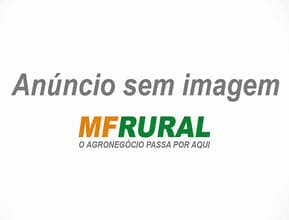MADEIRA BALSA -Ochroma pyramidale: Grade A
Balsa or as it is also known (pau-de-balsa in theBrazil) is a type of light wood (like styrofoam), resistant, fast growing.
What's yourscientific name? Ochroma pyramidale, Bombácea, popularly known as balsa stick (pau de balsa in Brazil).
HOWMUCH TIME DOES IT TAKE READY TO CUT?
The first cut of the plant is done in the thirdyear. The final cut is expected to occur at around five to six years of age,which is ready for export due to its maturity. Just for comparison, there isanother wood widely used in China, TECA, which needs an investment of 25 yearsto be ready. What is the main production hub in the world? Ecuador and Panamaare the largest producers; in Brazil we have the State of Mato Grosso, as oneof the ones that most invests in technology for production, besides having Academicsupport and technical knowledge through the Federal University of Mato Grosso(UFMT), Mato Grosso Company of Research, Assistance and Rural Extension(Empaer), MAPA and the reforestation companies.
ASPECTSOF WOOD AND ITS APPLICATION
“The wood isvery beautiful and considered noble, but as it is not from native forest, withhigh durability and mechanical resistance, it has been used for shipbuilding(coating of yachts, construction of rafts and rafts), thermal and acousticinsulation, surfboards. windsurfing, lifejackets, aeromodelling, crafts,papermaking, cellulose and laminates. Its fibers are long and produce a highquality type of cellulose.
Is there a by-product in the Balsa stick? Yes, theleaves of the plant are medicinal, ideal for treating intestinal problems.According to researchers, the balsa stick is an economically viable crop andmentions that in the second year of cultivation, the producer will be able toremove the seed from the plant for sale. The plant also produces the featherthat accompanies the price of the international cotton market and is used tomake hats, pillows, ropes and others.
WHATIS THE INDEX FOR THE USE OF PAU BALSA?
To increase the value added to the balsa stick, itis usually sold in sawn wood, which is the splitting of logs or logs,consisting of pieces cut longitudinally by means of a saw, regardless of theirdimensions, of rectangular or square section. These sawn wood are processed inthe format (S4S - sawn planed wood on four sides).
Whatis the rate of use of a log of balsa wood (Pau-balsa in Brazil)?
The utilization rate for transforming logs intosawn wood in the format (S4S) is 10%. The by-product, can be benefited for theformat (S2S - that raw or sawn wood planed on both sides), but outside thestandardization. It has flaws and accepted details in its commercialization.Currently, alternatives for use in wood are being developed, such ashandicrafts, making partitions, doors, among other laminates and plywood.
Whatdo buyers most detail about what they expect from the balsa stick (Pau-balsa inBrazil)?
Density! The basic density of wood is an importantcharacteristic because it reflects the silvicultural and technologicalperformance of the species. Rapidly growing species are usually in tropicalregions, consume a lot of light and water and as a result they must have enoughempty space, that is, low basic density (enough empty spaces or parenchymaticvessels). On the other hand, dense species are more valued in the timber marketbecause they grow more slowly. The ideal density that buyers need for woodwould be 100 kg / m³ to 170 kg / m³, but they often accept density above 220 kg/ m³.
Whatis the obstacle to the commercialization of the balsa stick in Brazil?
The biggest obstacle is in the logistics, to makeits cultivation viable, the production must be close to the processingindustry. "The big secret of the balsa stick is to achieve highproductivity with low production cost, then it becomes economicallyinteresting.
ESPECIFICAÇÕES E CONDIÇÕES:
A)Blocos de Produto
B)Espécie: Madeira Balsa (Ochroma pyramidale)
C)Medidas:
•Espessura: 40/50/60/70/80 / 90mm
•Largura: 60/70/80/90/100 mm
•Comprimento: 450/600/750/900/1050/1200 mm
Tolerância:+/- 0,5 mm de largura e espessura, +/- 2 mm de comprimento.
D)Usinagem: Duas faces escovadas e duas faces serradas
E)Umidade: 8% a 12%.
F)Qualidade: Grau A
1.Pith: Não tolerável
2.Cortiça:
•a textura da fibra de madeira como fratura de grãos: não tolerável
•a textura da fibra de madeira como grãos sem fratura: =5 madeira por folha texturamacia: sem limitação
3.Nós: =F3,0 mm
4.Furo: =F3,0 mm, sem perfuração permitida
5.Favo de mel: =F3,0 mm
6.Spot:
•Marrom dentro de 10% da área de superfície é tolerável
•Preto não tolerável
•Manchas azuis toleráveis
•Manchas minerais toleráveis
7. Torção não tolerável
8. Rachadura:
•A largura longitudinal <2 mm
•O transversal não tolerável
G)Densidade:
•Nominal 150 kg / m3
•Faixa de densidade 120-200 kg / m3
•A densidade da madeira individual de 80 a 240 kg / m3
H)Embalagem: paletes devidamente numerados
I)Volume oferecido: 600 m3 mensais (10x40 pés HQ)
- TESTE: 2 CONTÊINERS. A 1° VENDA É SPOT (50% E 50%).
- NÃO EXISTE OUTRA MADEIRA QUE ELES TRABALHAM, O QUE EXISTE É UM SUBPRODUTO DA MADEIRA QUE É VENDIDA PARA OUTROS SETORES CONDIÇÕES:
PAGAMENTO: $760 MT
FORMA DE PGTO: SOMENTE ACEITO, T.T. 50% NA ASSINATURA DO CONTRATO E OS OUTROS 50% QDO. TODA DOCUMENTAÇÃO ESTIVER PRONTA.
- A ESPECIFICAÇÃO FICA A CRITÉRIO DO CLIENTE
- QUANTO A QUANTIDADE: 15 À 30 CONTAINERS MÊS.















